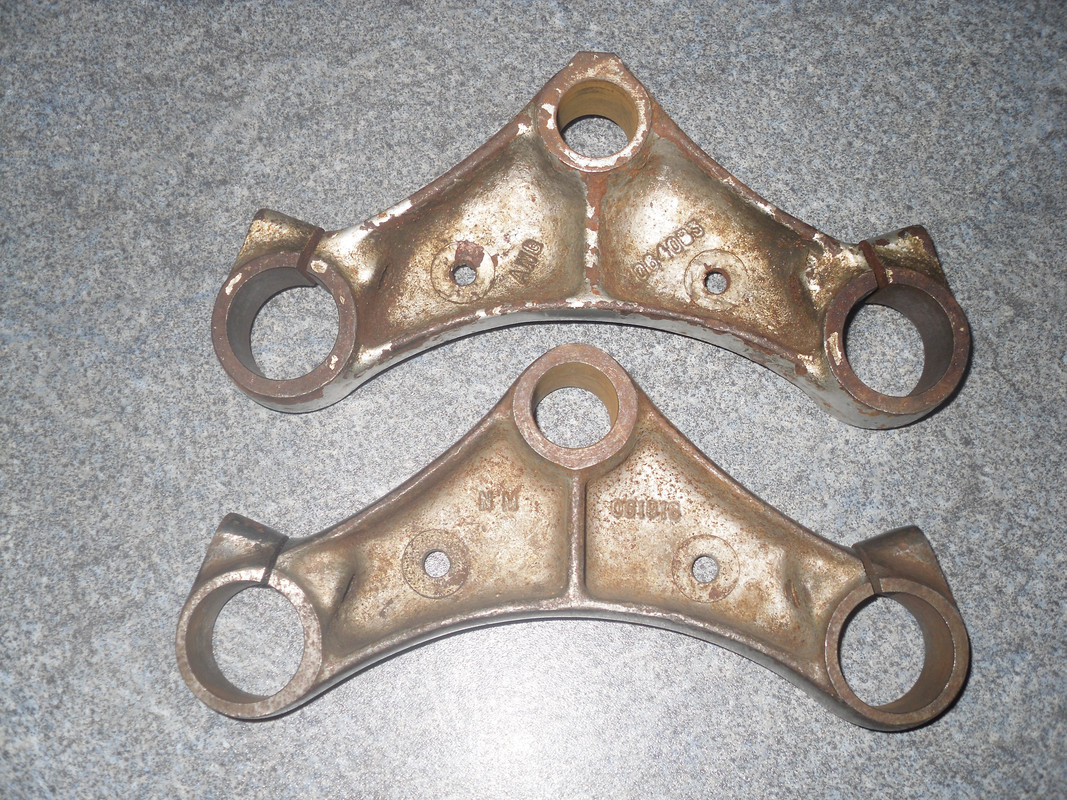Deckard
VIP MEMBER
- Joined
- Jun 18, 2009
- Messages
- 426
There has been enough thread discussion of 750 vs. 850 triple trees in the past. As an owner of a '71 750, I never did see anything definitive as to what was the difference was between '71-73 750's. Just that '71's were twitchy at high speeds. Even that may be Urban Legend.
Madass140 and CNW offer custom one's. Madass's looks to be a 68-70 replica, So suspect that is what it is. Neither he or Matt have model specific options for ordering. Don hasn't answered me about whether his is TT is angled (850) or parallel (750).
I suspect both are 850 angled, as that it could be installed on either model. Enough said about putting a 750 TT on a 850 and changing the trail.
850 TT on a 750 will change trail, but just would make it less responsive.
Owning both, I did like the 750 handling better than the 850, all things equal with a better headsteady.
Maybe some clarification by someone knowledgeable would help as far as if there is any real differences between '71 and '72 750's TT.
1973 is a crap shoot, it may be a 850 frame and TT.
Madass140 and CNW offer custom one's. Madass's looks to be a 68-70 replica, So suspect that is what it is. Neither he or Matt have model specific options for ordering. Don hasn't answered me about whether his is TT is angled (850) or parallel (750).
I suspect both are 850 angled, as that it could be installed on either model. Enough said about putting a 750 TT on a 850 and changing the trail.
850 TT on a 750 will change trail, but just would make it less responsive.
Owning both, I did like the 750 handling better than the 850, all things equal with a better headsteady.
Maybe some clarification by someone knowledgeable would help as far as if there is any real differences between '71 and '72 750's TT.
1973 is a crap shoot, it may be a 850 frame and TT.


